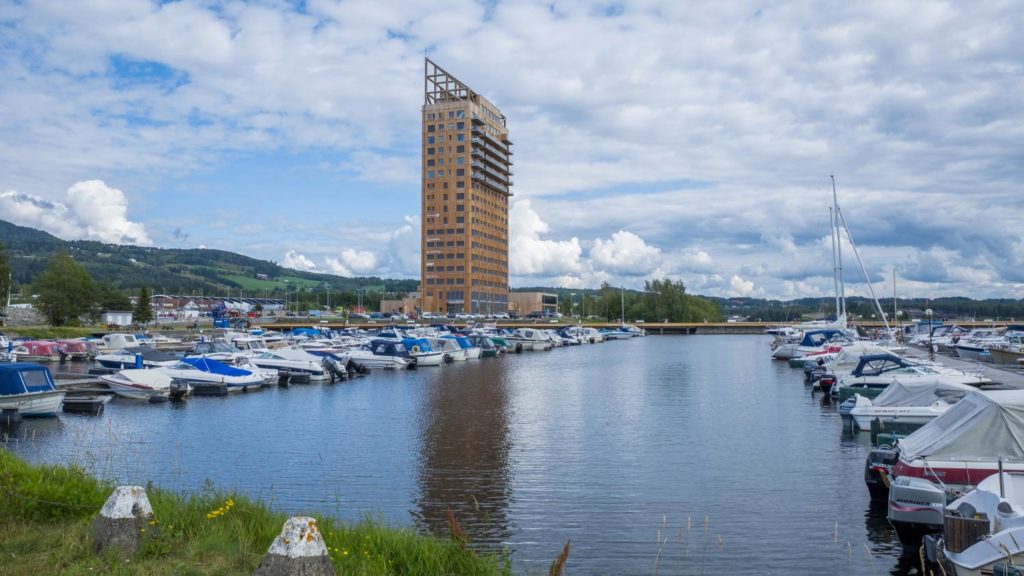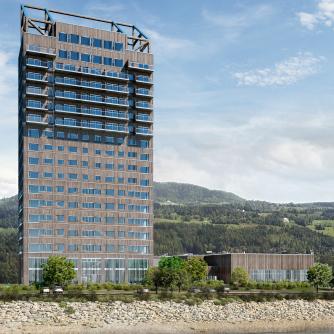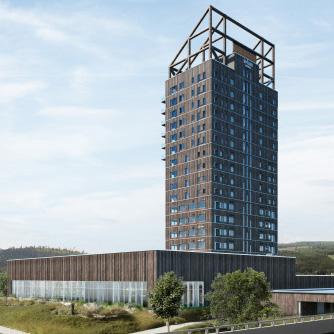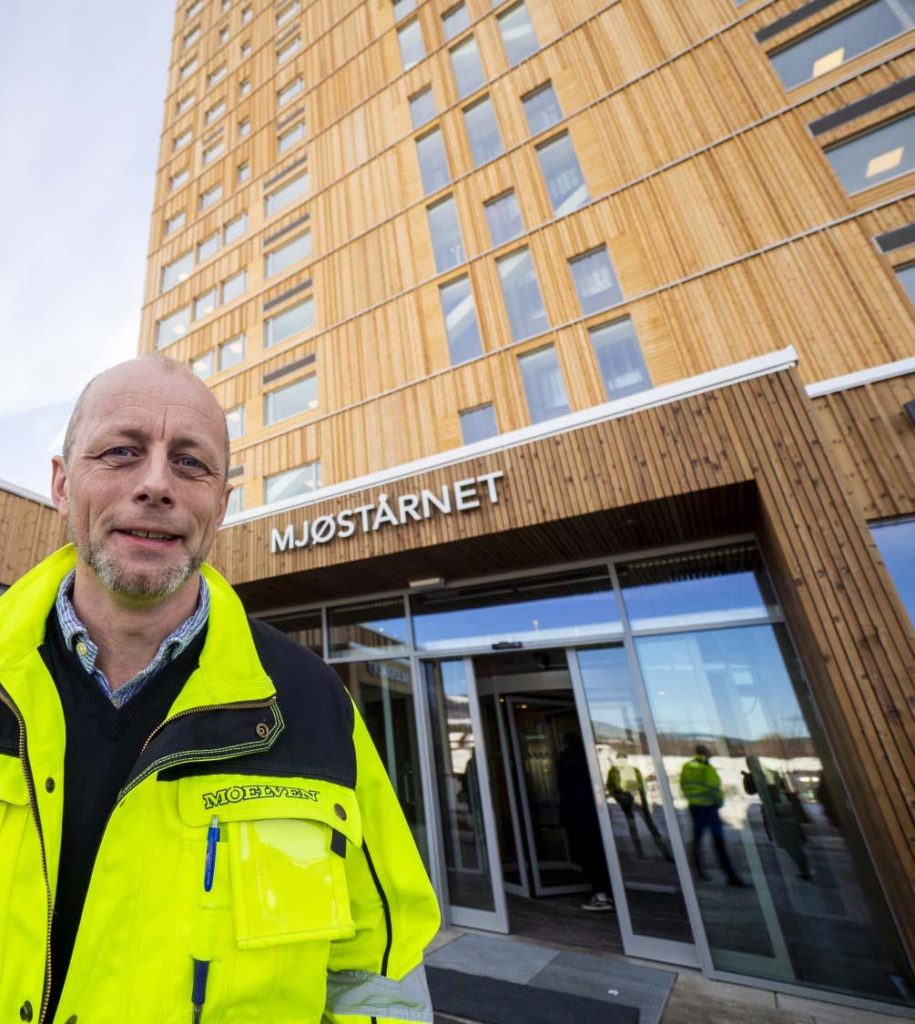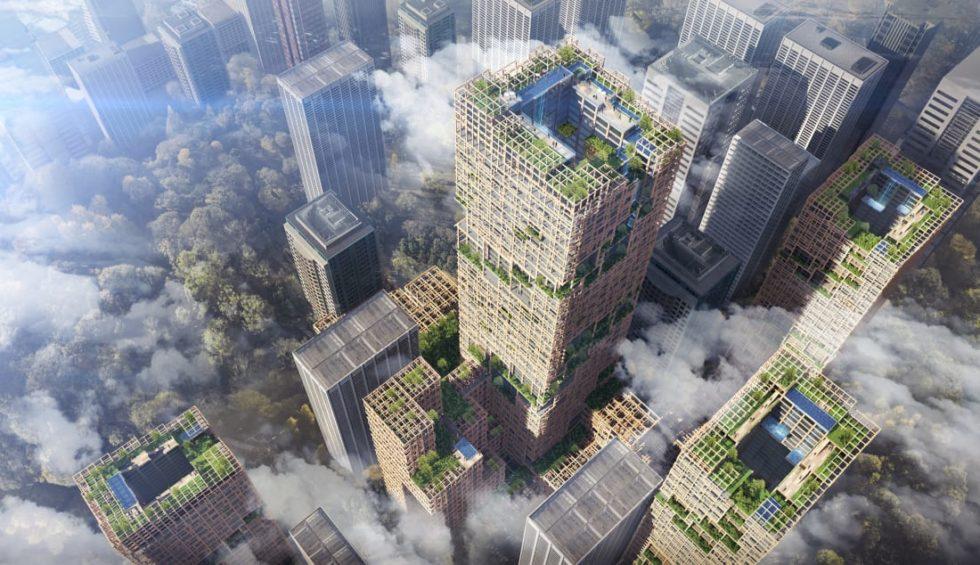The rising popularity of wood
With the current focus on sustainability, wood is seeing a surge in popularity as a building material. One of the leading countries is Norway, where the world’s tallest timber building was recently inaugurated.
Wood is one of the oldest building materials known to mankind. In fact, people were already building pile dwellings during the Stone Age. But the fear of fire led to a slow decline in the use of lumber as a building material, especially over the past few centuries. Now it appears that wood is making a comeback.
A safe building material
Thanks to its many qualities, this sustainable natural resource is experiencing a sudden renaissance. One of the great advantages of wood is that it is relatively easy to grow and harvest. But only, of course, if we avoid the indiscriminate clear-cutting of forests and respect modern forestry practices, as safeguarded under EU law. Furthermore, the building sector has rediscovered traditional methods and pioneered effective new means of rendering wood extremely resistant to the ravages of weather, time and, above all, fire.
Speaking of fire: when it comes to fire protection, solid wooden beams – along with beams of a sufficient diameter made of wood composites and laminated wood – can withstand blazing infernos as effectively as reinforced concrete structures of a comparable size! Wood has special characteristics that allow it to retain its stability during and after a fire. It actually forms a protective carbon layer when exposed to intense heat. Hence, the flames can only damage the outer layer of this astonishing building material. The exclusion of air due to the formation of carbon on the outer surface, as well as the density of the material and the stable core temperature, keep it from burning through and collapsing as a result.
With so many advantages, wood is the latest rage. Developers are embracing it as an ideal material to build high-rise structures in technologically advanced countries around the world. Not surprisingly, one of the leaders in this trend is a country that enjoys a position at the forefront of social developments and has impressive quantities of wood: Norway, where the world’s tallest timber skyscraper – Mjøstårnet – was recently completed.
Lego for adults
A height of 85.4 metres, 18 storeys and 10,500 square metres of floor space – these are the vital statistics of this impressive structure, which is made of a renewable resource that comes from the region. In addition, a groundbreaking new assembly process was used. The finished wooden beams were transported directly to the construction site and brought into position with millimetre precision. This required a high degree of accuracy, explains Rune Abrahamsen, CEO of the Scandinavian industrial group Moelven Limtre, which supplied the building products and systems used in the project. There was no room for error in the assembly, which was essentially like Lego for adults.
This modular approach made it possible to assemble the several hundred glued laminated timber (glulam) beams in just ten months. As a result, Mjøstårnet rapidly took shape in the small town of Brumunddal. “It’s an incredible feeling to watch almost 20 metres of the building’s height being hoisted into place in one go. Both the building and our pride grow in tandem,” head of assembly Lars Ivar Lindberg proudly proclaimed at the opening ceremony.
Now the building is already occupied. Part of the tower is reserved for private residential use, while another part provides space for offices. There’s also a hotel, restaurants and even an additional 4,700 m² swimming pool.
But what we recognize as an astonishing achievement pales in comparison to another project: in Tokyo work is currently underway on designing a so-called “plyscraper” called W350. To commemorate the 350th anniversary of building materials giant Sumitomo Forestry, the company intends to erect a 350-metre-high timber monument to the company’s history. It’s scheduled to be completed in 2041.
Text: Johannes Stühlinger
Translation: Rosemary Bridger-Lippe
Images: 2019 Melven Industrier ASA & Sumitomo Forestry Co., Ltd.
WOOD IS AN AMAZING BUILDING MATERIAL!
1. Wood protects the climate
Wooden buildings serve as an extension of the carbon storage capacity of trees in forests. Every cubic metre used in construction retains one tonne of CO2. Every felled tree creates space for new trees, which in turn actively remove CO2 from the air. Each building made of wood helps to reduce CO2 emissions generated from the production of other CO2-intensive building materials like steel and concrete.
2. Timber grows back
While other materials needed for construction are becoming increasingly scarce, forests are continuously regenerating themselves. Austria’s forests produce a cubic metre of wood every second. The principle of sustainability, which has been practised in the country for over 300 years, ensures that there is always an ample supply of wood. One third of the annual timber growth in Austria would provide enough lumber to meet the yearly lumber volume needs of the country’s construction industry.
3. Wood is an important economic factor
Using wood as a raw material – for example, as a building material – and not burning it immediately enhances the economic value that can be generated with this local resource. Some 300,000 people in Austria live from the forestry and wood products industry, making it one of the largest employers in the country. The sector also creates new jobs in rural areas.
4. Wood is a highly sophisticated building material
Intensive research and development in recent years have produced new wood-based materials that pave the way for new construction methods. Cross-laminated timber – a wood panel product consisting of several layers of wood laid crosswise on top of each other and glued together – has revolutionized timber construction and is the key to the use of wood in multi-storey structures. Massive wooden panels can often replace slabs of reinforced concrete in construction projects.
5. Wood allows for a wide diversity of designs
Computer-based calculating and manufacturing methods allow for completely new design forms. Everything is possible, from wide-span supporting structures to high-rise buildings. An increasing number of renowned architects, including Shigeru Ban and Norman Foster, make use of the advantages of timber construction. Arguably the oldest construction material in the history of mankind, wood has now become synonymous with modern architecture and building design.
6. Wood is particularly suitable for prefabrication
Building with wood takes place not so much on construction sites, but rather on the factory floor. Walls, ceilings and even entire rooms made of wood can be precisely pre-assembled in production plants, regardless of the prevailing weather conditions. The completed building elements are transported to construction sites and assembled. The actual construction is carried out with a minimum amount of noise and disturbance. Buildings go up like clockwork. There are no curing times, such as with reinforced concrete.
7. Wood can support many times its own weight
Wood has a high load-bearing capacity with low dead weight. This means that components made of wood are lighter than their equivalents made of concrete, steel or brick. Consequently, wooden buildings require smaller foundations, which saves space and money. Structural considerations often dictate that adding storeys to existing buildings is only possible with a light material like wood. This gives wood a decisive advantage when it comes to achieving greater urban density in cities.
8. Wood burns in a predictable manner
Wood can burn, yet wooden houses are at least as safe as houses made of other materials. Like all other buildings, wooden structures must comply with official safety regulations. In the event of a fire, wood, unlike other building materials, burns in a highly predictable and controllable manner. Wood burns slowly. Under the charred layer it remains undamaged and the load-bearing capacity remains intact for a long time.
9. Wood feels good to the touch
Wood smells good, feels good and creates a pleasant atmosphere. It is a warm building material that does not draw heat from the human body. Wood can absorb and release moisture and thus helps to ensure a naturally regulated indoor climate.
10. Wood produces no waste
Wooden houses can be easily dismantled when they have deteriorated and reached the end of their useful service lives. Individual components can be recycled. What is no longer needed can be burned. The carbon stored when the trees grow is then released again and the CO2 cycle is complete.
Source: Holz ist genial
